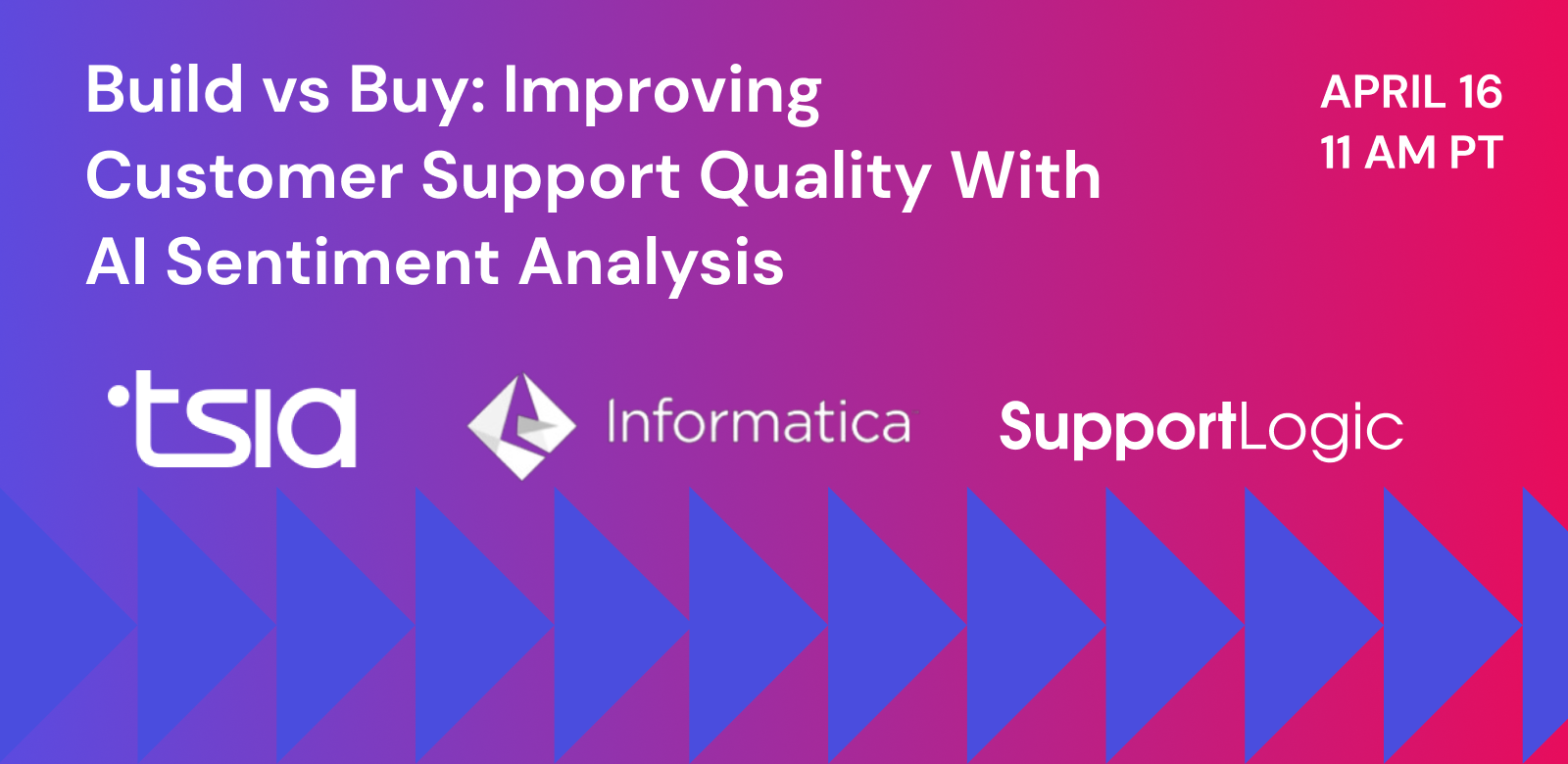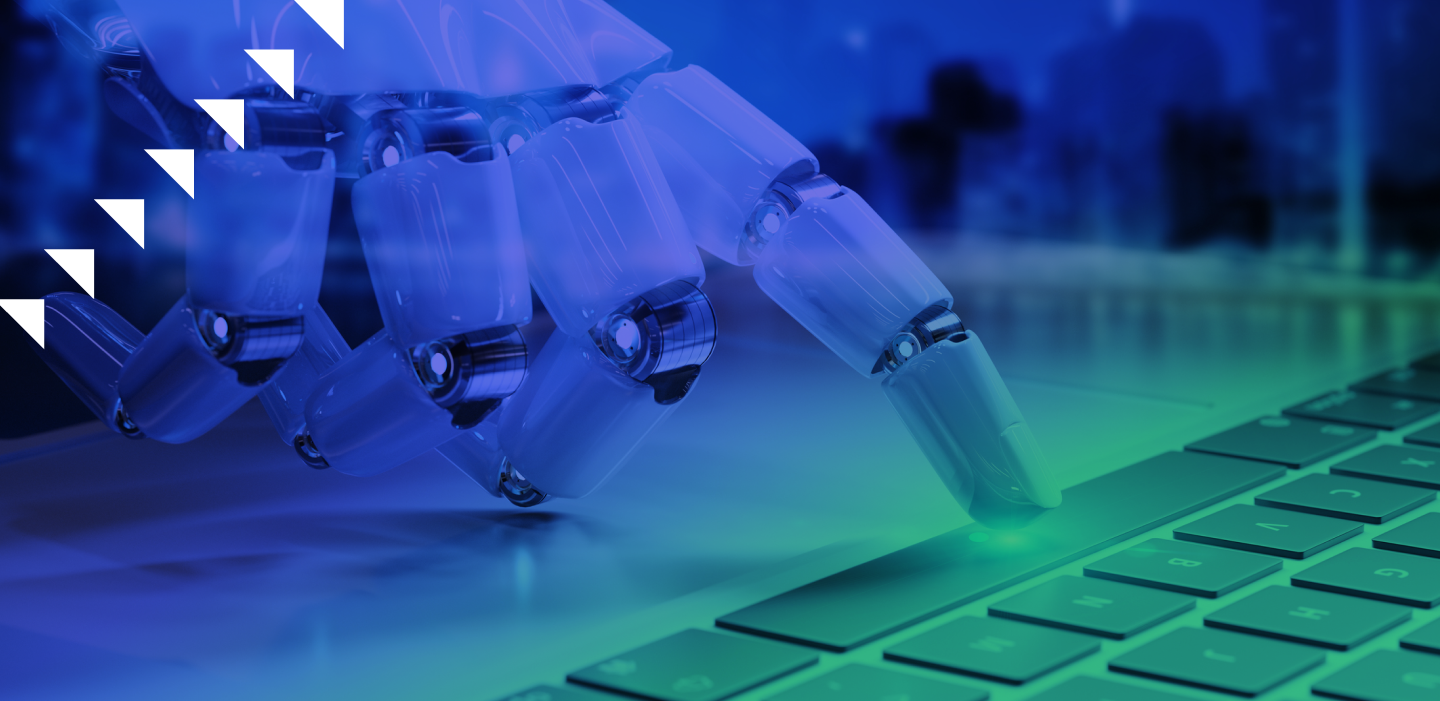
Jun 30, 2025
Key Takeaways from Smarter Answers, Better Support: How NICE is Reinventing Knowledge Access with AI
CX TransformationSupport ExperienceAI for supportgenerative AI
Enterprise support organizations are facing a mounting challenge: knowledge is growing, but access is shrinking. As products become more complex and customer expectations rise, support teams are struggling with fragmented systems, outdated tools, and inconsistent self-service experiences. The result is inefficiency for agents, friction for customers, and rising support costs.
In a recent conversation hosted by SupportLogic, Chris Romrell from NICE shared how he is addressing this challenge head-on. The discussion centered on how generative AI, intelligent search, and modern knowledge strategies are coming together to deliver real business impact. With tools like SupportLogic’s Resolve SX and Precision RAG, NICE is transforming how support teams and customers alike interact with knowledge.
Whether you’re leading a digital transformation, optimizing your support operations, or modernizing your enterprise knowledge base, NICE’s approach offers a clear example of what’s possible when AI is deployed with precision and purpose.
The Challenge: Too Many Knowledge Sources, Too Little Access
At NICE, the support team faced a common but critical issue: their knowledge ecosystem had grown too large and too fragmented to serve customers or employees effectively. Like many global enterprises, NICE had accumulated a mix of knowledge sources: Salesforce, customer help portals, documentation from acquisitions, and legacy content systems like MindTouch.
The result was a disjointed knowledge environment where users had to search across 10 to 15 different locations to find answers. Customers rarely bothered. Internal teams struggled too. The federated search tool in place, like many keyword-based enterprise search platforms, delivered inconsistent results, forcing users to click through link after link, hoping to stumble on the right information.
This is a widespread problem in enterprise support: knowledge sprawl, low search accuracy, and manual tagging bottlenecks all contribute to poor self-service outcomes and longer case resolution times. Support engineers and agents often bypass the knowledge base entirely, relying on tribal knowledge or past tickets to troubleshoot recurring issues.
For NICE, this wasn’t sustainable. As customer expectations for fast, relevant answers grew—and as generative AI changed the way users expected to interact with support portals—the team knew their current system had reached its limits.
They needed a new approach: one that could centralize knowledge access, eliminate noise, and deliver trusted answers at speed, all while scaling across internal teams and customer touchpoints.
Rethinking Search: From Links to Generative Answers
The turning point for NICE came with a realization: search, as they knew it, was no longer serving the business. Traditional federated tools relied on keywords and static link lists, demanding that users refine their queries repeatedly to locate the right content. This experience was inefficient for agents and nearly unusable for customers.
Modern users expect more. Influenced by consumer AI tools and large language models, customers now expect search to work more like conversation: natural, intuitive, and accurate. NICE recognized that delivering this kind of experience would require a fundamental shift—from indexing knowledge to interpreting it.
The team began exploring generative AI for enterprise search, looking for a way to synthesize answers from across disparate sources. Their goal wasn’t just to improve search results—it was to deliver precise, contextually relevant responses directly within the support journey. That meant moving beyond link lists and embracing retrieval-augmented generation (RAG) as a framework.
SupportLogic’s Resolve SX, combined with the newly acquired XFind technology, provided a clear path forward. Unlike legacy systems, Resolve SX enables users to ask questions in natural language and receive a synthesized, AI-generated response. These answers are backed by citations from trusted sources, giving customers both clarity and confidence.
This was more than a technical upgrade. It was a strategic move to deliver AI-powered knowledge discovery across all support channels: customer portals, case creation workflows, and internal tools. It also aligned with NICE’s broader push to elevate self-service, reduce agent burden, and create more scalable support operations.
Building the ROI Case for AI-Powered Support
For NICE, the move to generative AI wasn’t driven by curiosity but by economics. To justify the investment, the team built a detailed ROI model focused on case deflection, knowledge reuse, and operational savings.
They began with a clear data set: 50,000 support cases annually. Historically, only 25% of those cases were resolved by providing existing knowledge to the customer, meaning the majority of customers weren’t using or finding value in self-service. The insight was clear: the knowledge existed, but the delivery model was broken.
NICE used this baseline to project deflection impact. If just 3% of those cases could be deflected through better AI-powered search, the cost savings would be substantial. That calculation factored in case-handling costs, agent workload, and the overhead of redundant troubleshooting. This is the kind of small percentage that yields large enterprise-scale returns.
The team also identified a key leverage point: embedding generative search directly into the case creation process. Rather than hoping customers search before submitting a ticket, NICE built an experience that captures their query and surfaces AI-generated answers in real time—turning intent into resolution without agent intervention.
Crucially, this wasn’t just theoretical. NICE began tracking deflection effectiveness through a new metric called a “search session”, grouping related queries from a single user over time. By correlating sessions with ticket outcomes, the team could identify when a search successfully resolved an issue and when it failed, enabling continuous optimization of the AI model and the content corpus.
This shift reframed how support value is measured: not just in case volume handled, but in the volume avoided altogether through smarter automation and search precision.
Measuring Deflection and Search Effectiveness: From Guesswork to Insights
Measuring case deflection has long been one of the most ambiguous metrics in customer support. Many organizations rely on vague correlations between search activity and lower ticket volumes, but without direct attribution, it’s difficult to validate outcomes or optimize them.
NICE approached this challenge with a more rigorous, data-driven methodology. Rather than simply counting searches, they introduced a more precise metric: the search session. This concept groups related queries by a single user within a timeframe, providing a clearer picture of intent and outcome.
Each session is then mapped against case activity:
- If a session concludes without a case being created, it’s marked as a likely deflection.
- If a session results in a case, it signals that the user didn’t find what they needed.
This approach allows NICE to track true support deflection, not just assumed success based on search volumes. It also helps them identify high-friction topics and gaps in knowledge coverage, driving continuous improvement of content and AI tuning.
More importantly, NICE looks at the quality of sessions. With generative AI providing full, contextual answers, a single precise query can resolve what used to take multiple searches. So, while the total number of searches per user may decline, session value goes up. The right measure isn’t quantity of clicks, it’s successful resolution without escalation.
For support leaders, this is a blueprint for transforming support metrics. Instead of relying on outdated models or anecdotal feedback, NICE is showing how to use AI-driven analytics to measure knowledge effectiveness, self-service performance, and automated resolution outcomes.
Rebuilding Trust in Self-Service with AI
One of the biggest challenges in modernizing support is not the technology, it’s the perception. Over the years, customers have been conditioned to distrust self-service. Clunky portals, irrelevant search results, and outdated knowledge bases have trained users to skip the search box and go straight to case creation.
NICE set out to reverse that behavior by rebuilding the experience from the ground up. Their goal was to create a self-service journey that felt effortless, accurate, and trustworthy – powered by generative AI and contextual understanding.
Rather than relying on static FAQs or link lists, NICE deployed SupportLogic’s Resolve SX to deliver real-time, conversational answers based on precise understanding of customer queries. This meant customers could type natural language questions (long or short) and receive synthesized, relevant guidance backed by credible sources.
But better answers alone weren’t enough. NICE focused on embedding intelligent search directly into the customer workflow, including the case creation process. This allowed customers to interact with knowledge as part of their journey, not as a detour. If the AI-generated answer solved their issue, no case was needed. If not, escalation was seamless.
To ensure adoption, NICE monitored key behavioral signals:
- Growth in unique search sessions
- Decrease in average searches per session (indicating higher answer quality)
- Increased use of feedback tools (like thumbs up/down and comments) to refine AI performance
The result: customers who once avoided self-service are now re-engaging, thanks to a system that learns from their behavior, surfaces meaningful results, and respects their time.
This shift isn’t just about deflection. It’s about delivering a customer experience that earns trust, reduces friction, and positions the support team as a partner in problem-solving.
Internal Enablement: Scaling Knowledge Without Overburdening Engineers
Enterprise support teams often rely on a small group of experts to carry the weight of complex case resolution. The traditional knowledge management model expects these same experts to write, tag, and format articles after resolving issues—a process that’s unsustainable at scale.
NICE recognized this bottleneck and saw an opportunity: what if knowledge creation didn’t require extra effort? What if the act of solving a case could automatically feed the knowledge system?
With SupportLogic’s Assist and Resolve SX capabilities, NICE is transforming case history into a dynamic source of insight. Rather than asking engineers to manually write articles, generative AI is now used to extract and summarize solutions directly from resolved cases. This reduces the burden on agents while increasing the velocity of knowledge capture.
In parallel, NICE is leveraging historical ticket data as a searchable knowledge asset, turning resolved cases into usable intelligence for future issues. This shift allows frontline agents and newer team members to benefit from tribal knowledge without needing to ask around or dig through CRM logs.
The long-term vision is a hybrid knowledge model:
- AI-generated knowledge from past cases
- Human-reviewed and curated for customer-facing use
- Automatically surfaced in internal tools like Salesforce
This model not only reduces manual overhead but also raises the quality of support delivery. Engineers spend less time duplicating effort, and more time solving high-value problems. Meanwhile, the AI ensures that learnings from each case are preserved and reused systemically.
For enterprise support leaders, this is the future: scalable knowledge that doesn’t depend on documentation heroes, but on AI-powered workflows, case hygiene, and smart reuse of historical data.
What’s Next: Expanding AI Across the End-to-End Support Journey
With a new AI foundation in place, NICE is moving quickly to extend its impact across the full lifecycle of enterprise support. The goal is no longer just to fix search but to embed intelligence into every step of the customer and agent experience.
One major initiative is the rollout of embedded AI search within Salesforce. NICE is enabling technical account managers, professional services, and support engineers to access the same high-quality knowledge that customers receive. By unifying external and internal knowledge access, NICE ensures consistency while improving agent efficiency.
Another priority is accelerating the adoption of SupportLogic Assist, which brings AI-powered recommendations directly into the case workflow. This includes automatic case summarization, suggested troubleshooting steps, and next-best actions surfaced in real time. For engineers, this means less ramp-up time, faster resolution, and fewer dependencies on tribal knowledge.
As NICE completes its transition from Salesforce Classic to Lightning, these AI capabilities will become even more deeply integrated. The long-term vision is a fully contextual support environment, where every case, question, or symptom triggers smart insights drawn from across the knowledge ecosystem.
This roadmap reflects a shift in mindset: from knowledge as a static library to knowledge as a living system that supports real-time decision-making. It’s not just about faster answers. It’s about enabling every team member to act with confidence, context, and speed.
For enterprise organizations exploring AI in customer support, NICE offers a compelling model: start with precision, prove value through deflection and agent efficiency, and then scale intelligence across the support stack.
Lessons Learned: How to Begin Your AI-Driven Support Evolution
For enterprise leaders, NICE’s journey offers more than a technology case study, it’s a roadmap for rethinking support as a strategic function. The shift to generative AI and intelligent knowledge systems isn’t just about reducing ticket volume. It’s about elevating how support teams operate, how customers engage, and how value is created across the organization.
Here are four key takeaways for any company considering a similar path:
- Start with the right problem, not just the latest technology: NICE didn’t begin with AI for AI’s sake. They began with a clear business challenge: too many knowledge sources, not enough access. The success of any AI initiative depends on how well it’s aligned with measurable outcomes – like deflection rate, resolution speed, or support team productivity.
- Build an ROI model early: Quantify the opportunity before you invest. NICE’s decision to pursue a 3% case deflection target from 50,000 cases gave them a clear financial justification. This kind of model helps secure stakeholder buy-in and guides implementation priorities.
- Optimize the experience: Even the best content fails if users can’t find it. NICE focused on the search experience: embedding AI into the workflows where customers and agents naturally ask for help. Relevance, context, and speed matter more than search volume.
- Make space for experimentation: AI in support is still evolving. NICE has created room for innovation within its team, dedicating resources to explore what’s possible, test new workflows, and pilot use cases across the support lifecycle. Giving teams permission to experiment unlocks new ideas and drives continuous improvement.
As AI reshapes enterprise support, those who move with intention—grounded in real problems, backed by data, and focused on customer value—will be positioned to succeed.
Watch the full discussion with Chris Romrell from NICE here:
To learn more about how SupportLogic can help you operationalize AI for CX, join our weekly demo.
Don’t miss out
Want the latest B2B Support, AI and ML blogs delivered straight to your inbox?



